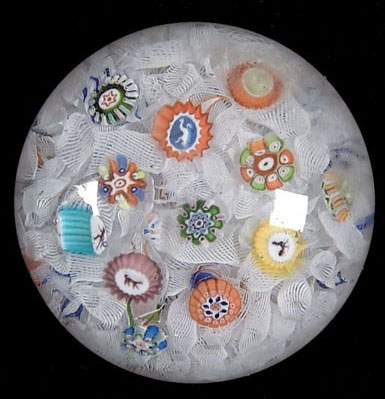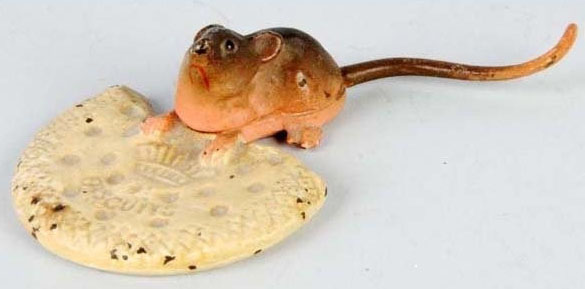 |
Paperweights
Compact and colorful, artistic and affordable, paperweights have been popular with collectors since the mid 19th century. These circular works or art are created individually by glassmakers who create unique paperweights in a thick, domed case which serves as a magnifier for the figures within. The most popular are Millefiori, but collectors also value advertising, political, and cameo scenes and subjects by Baccarat, Clichy, and others.
Paperweight History
The earliest paperweights were primarily functional. The rampant growth of business and industry that was an offshoot of the industrial revolution created paperwork in the form of bills, invoices, orders, letters and business correspondence in large quantities. In the days when workplaces relied on operable windows through which cool breezes made the workplace habitable in hot weather, a refreshing wind could disrupt a years worth of paper records. The first paperweights were simple forms in glass or metal, but by the 1840s, an entire industry devoted to the manufacture of the paperweights was born.
Collectible Paperweights
According to the Paperweight Collectors Association, collectors of antique and vintage paperweights divide them into three categories: the Classic Period, the Folk Art & Advertising Period and the Contemporary Period.
Paperweights in the Classic Period
In the mid-19th century, some of the biggest names in art glass and high end glassware were producing beautiful crystal paperweights. These included Clichy, St. Louis and Baccarat paperweights from France, Walsh-Walsh and Bacchus in England, and Pairpoint, Boston & Sandwich, and the New England Glass Company in the United States.
 |
Folk Art and Advertising Paperweights
From the 1880s until about World War II, paperweights were popular for advertising and as souvenirs for tourists. In sulphide paperweights, a figure or portrait executed in a porcelain-like material is embedded in the glass. Advertising and souvenir paperweights feature a flat photograph or illustration encased in glass. Political figures and leaders were popular subjects for paperweights.
Paperweights in the Contemporary Period
More recent examples come from Paul Ysart, working for Montcrieff Glassworks in Scotland. His paperweights come with labels that say Monart. Other contemporary art glass paperweights are produced by John Deacons, Charles Kazuin, Stephen Lundberg and Paul Stankard. Attributable paperweights are typically worth more especially from name artists and manufacturers, so look carefully for makers’ marks and dates, which are sometimes found on the canes.
-Reference note by p4A Contributing Editor Susan Cramer.
